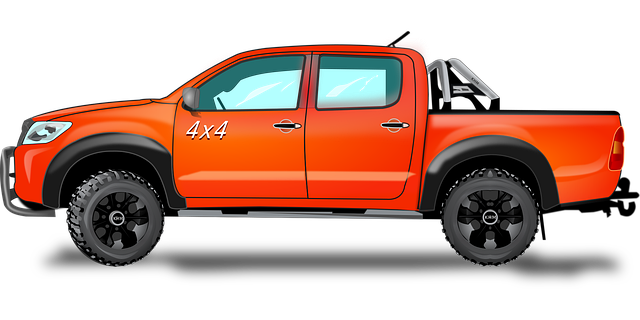The Brownsville Fleet prioritizes safety and operational efficiency through regular truck brake pad replacements and rock rail inspections. Rock rails, critical in navigating rugged terrain, serve as secondary collision barriers, preventing rollovers and enhancing driver/passenger security. By minimizing brake pad wear and maintaining rock rail integrity, the fleet reduces risks, enhances performance, and optimizes costs, ensuring safe operations in challenging urban environments. This proactive maintenance approach, including semi-annual brake pad replacements, positions the Brownsville Fleet as industry leaders in safety and productivity.
Rock rails, a critical safety feature for commercial vehicles, offer enhanced stability and protection against side impacts. This article delves into the significance of rock rails through multiple lenses. We explore their role in truck design, focusing on advantages like improved safety and performance, drawing insights from the maintenance practices of the Brownsville fleet. Furthermore, we discuss why regular truck brake pad replacement is vital and present case studies demonstrating successful implementations of rock rails in fleet operations, emphasizing the importance of proper maintenance for longevity.
- Understanding Rock Rails: A Safety Feature for Commercial Vehicles
- The Brownsville Fleet: An Overview of Their Truck Maintenance Practices
- Why Truck Brake Pad Replacement is Crucial for Safety and Performance
- Advantages of Incorporating Rock Rails in Truck Design
- Maintenance Tips for Rock Rails to Ensure Longevity
- Case Studies: Successful Implementation of Rock Rails in Fleet Operations
Understanding Rock Rails: A Safety Feature for Commercial Vehicles

Rock rails are an essential safety feature designed for commercial vehicles, especially those operating in rugged or off-road conditions. These robust metal barriers are strategically placed along highways and roadsides to provide a crucial secondary barrier in case of a vehicle collision. When a truck veers off the road or experiences a sudden impact, rock rails act as a solid shield, preventing the vehicle from rolling over or colliding with nearby obstacles like trees, utility poles, or other traffic.
For fleet owners, such as those managing a Brownsville fleet, understanding the importance of rock rails is vital. Regular truck brake pad replacement and other maintenance tasks should be complemented by inspections to ensure these safety features are in optimal condition. By prioritizing the integrity of rock rails, commercial vehicle operators can significantly enhance driver and passenger safety, reducing the risk of severe injuries or fatalities during accidents in challenging terrain.
The Brownsville Fleet: An Overview of Their Truck Maintenance Practices

The Brownsville Fleet, a prominent name in the trucking industry, is known for its robust and efficient operations. Their truck maintenance practices are a cornerstone of their success, with a particular focus on regular brake pad replacement. This proactive approach ensures that their fleet remains safe and reliable, crucial factors in the high-pressure world of long-haul transportation.
By implementing rigorous maintenance schedules, including prompt Brownsville fleet truck brake pad replacement, they mitigate the risk of unexpected breakdowns. This not only enhances the overall safety of their operations but also minimises downtime, which is essential for maintaining customer satisfaction and meeting tight delivery deadlines. Their commitment to regular maintenance reflects a deep understanding of the importance of well-maintained vehicles in the trucking business.
Why Truck Brake Pad Replacement is Crucial for Safety and Performance

In the world of trucking, maintaining optimal performance and safety is paramount, especially for fleets operating in urban areas like Brownsville. One critical aspect often overlooked but essential for both safety and performance is regular truck brake pad replacement. Brake pads are a vital component of a vehicle’s braking system, responsible for converting kinetic energy into heat when you apply the brakes. Over time, these pads wear down, reducing their effectiveness and compromising the overall stopping power of the truck.
Brownsville fleet managers must prioritize routine brake pad inspections and replacements to ensure their vehicles can safely navigate through heavy traffic and unexpected situations. Outdated or worn-out pads can lead to longer braking distances, reduced control, and even catastrophic failures, posing significant risks to drivers, passengers, and other road users. By keeping truck brake pads in top condition, fleet owners not only enhance safety but also contribute to improved vehicle performance, ensuring a smoother ride and better fuel efficiency over time.
Advantages of Incorporating Rock Rails in Truck Design

Incorporating rock rails into truck design offers several significant advantages, especially for those in the Brownsville fleet managing regular truck brake pad replacements. Firstly, rock rails enhance safety by providing an additional barrier against roadside hazards, such as trees, guardrails, and other vehicles. This is particularly crucial during emergency stops or when drivers veer off course, preventing potential rollovers and mitigating the risk of severe accidents.
Moreover, these rails can improve vehicle stability and control, especially on unpaved or rough terrain commonly found in certain regions. For Brownsville fleet operators, this means reduced instances of truck damage and fewer costly repairs related to off-road incidents. Additionally, rock rails contribute to better fuel efficiency by minimizing the impact of side winds and road debris, which can otherwise cause drag and increase fuel consumption. This is a valuable consideration for businesses aiming to optimize their operational costs, particularly when frequently conducting long-distance hauls or navigating challenging road conditions.
Maintenance Tips for Rock Rails to Ensure Longevity

Regular maintenance is key to extending the life of rock rails, especially in rugged environments. For commercial fleets like the Brownsville fleet, implementing a structured maintenance schedule for truck brake pad replacement and overall rock rail inspection is vital. Start by inspecting rock rails at regular intervals, focusing on areas prone to damage such as corners, edges, and any signs of wear or fatigue.
During maintenance, ensure thorough cleaning to remove debris and corrosion. Check the condition of mounting hardware and replace any worn components. Proper lubrication of moving parts can also prevent premature deterioration. For instance, Brownsville fleet managers could schedule semi-annual checks, including brake pad replacement, to ensure their rock rails remain effective in mitigating off-road incidents and enhancing overall safety.
Case Studies: Successful Implementation of Rock Rails in Fleet Operations

In recent years, the successful implementation of rock rails has been prominently featured in fleet operations, particularly within the Brownsville fleet. This innovative solution has proven to be a game-changer when it comes to enhancing safety and efficiency for truck brake pad replacement processes. By strategically integrating rock rails into their infrastructure, the Brownsville fleet has significantly reduced the risk of rollovers and other accidents during maintenance procedures.
The case study highlights how rock rails effectively act as a barrier, containing vehicles within designated areas during critical tasks like brake pad replacements. This not only streamlines the maintenance process but also ensures the safety of technicians. For instance, the Brownsville fleet has witnessed a notable decrease in workplace injuries and associated costs since adopting this measure. Furthermore, the efficient use of space enabled by rock rails allows for better organization and accessibility during fleet operations, contributing to overall productivity gains.
Rock rails offer a compelling solution for enhancing commercial vehicle safety, particularly in challenging terrain. As demonstrated by the successful implementation in the Brownsville fleet, these structural additions can significantly reduce damage and improve overall performance. Regular maintenance, including essential truck brake pad replacements, further ensures optimal safety and longevity for rock rail systems. By adopting such features, fleet operators can navigate treacherous roads with enhanced confidence, ultimately contributing to safer operations and reduced maintenance costs.



